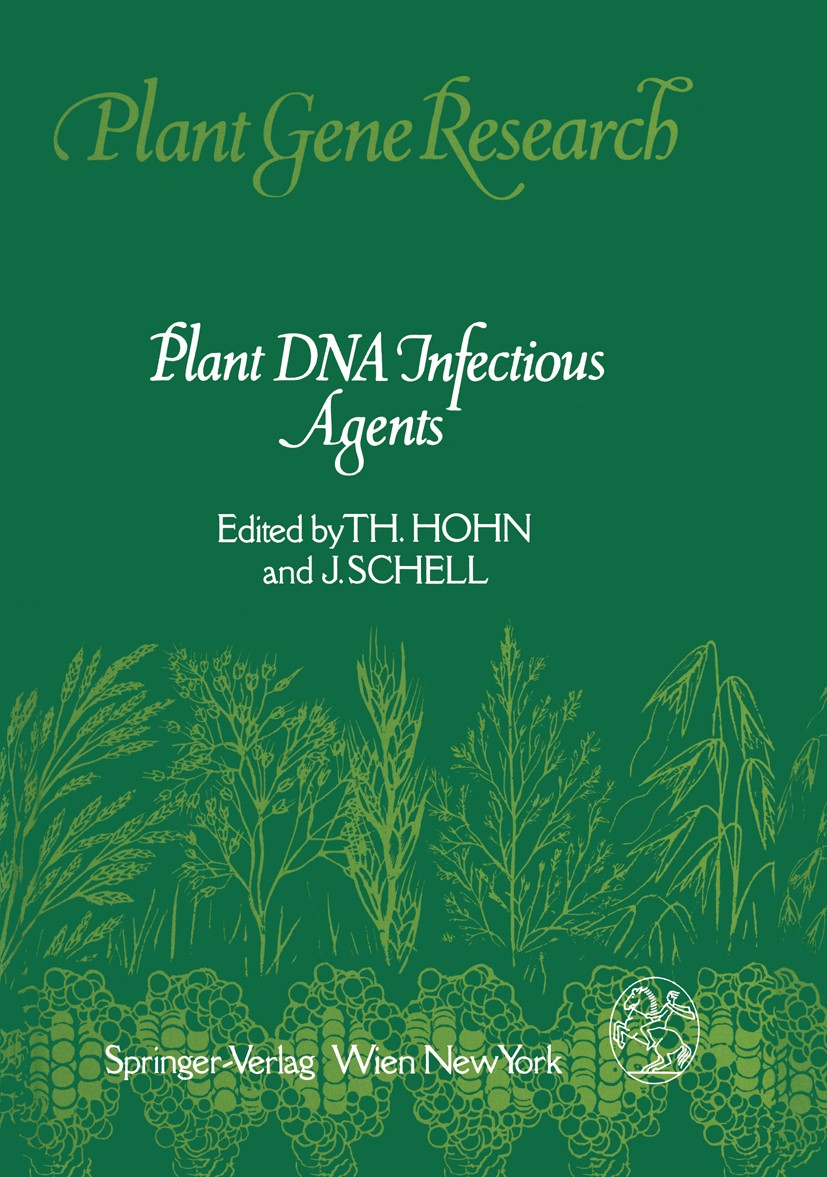| 书目名称 | Plant DNA Infectious Agents | | 编辑 | Thomas Hohn,Joszef Schell | | 视频video | http://file.papertrans.cn/749/748523/748523.mp4 | | 丛书名称 | Plant Gene Research | | 图书封面 |  | | 描述 | There has been recent rapid progress in the transformation of plants with foreign DNA, making use either of the natural routes of genetic invasion that viruses and bacteria have developed, or of chemical, mechanical and electrical tricks to make plant protoplast membranes permeable to nucleic acids. Genes integrated into plant virus genomes can be carried systemi cally from the initial site of infection into the rest of the plant. Genes placed between the borders of Agrobacterium tumefaciens T-DNA can be transferred into single cells or plant tissue, which then divides to produce wound calli, or as in the case of an Agrobacterium rhizogenes infection, grow out into new roots. Calli and roots can be grown into whole plants. If virus genomes are placed between the T-DNA borders, a very effective infectious route, termed "agroinfection", is established. Once inside a pro toplast, DNA finds its way into the nucleus where it can finally integrate into the resident chromosome and be expressed. Whether it can also find its way into chloroplasts is not yet clear, but at least translation products can be targeted into this organelle. Regeneration of whole organisms from single cells is a | | 出版日期 | Book 1987 | | 关键词 | DNA; plant | | 版次 | 1 | | doi | https://doi.org/10.1007/978-3-7091-6977-3 | | isbn_softcover | 978-3-7091-7458-6 | | isbn_ebook | 978-3-7091-6977-3Series ISSN 0175-2073 | | issn_series | 0175-2073 | | copyright | Springer-Verlag/Wien 1987 |
The information of publication is updating

|
|
 |Archiver|手机版|小黑屋|
派博传思国际
( 京公网安备110108008328)
GMT+8, 2025-11-22 20:47
|Archiver|手机版|小黑屋|
派博传思国际
( 京公网安备110108008328)
GMT+8, 2025-11-22 20:47


